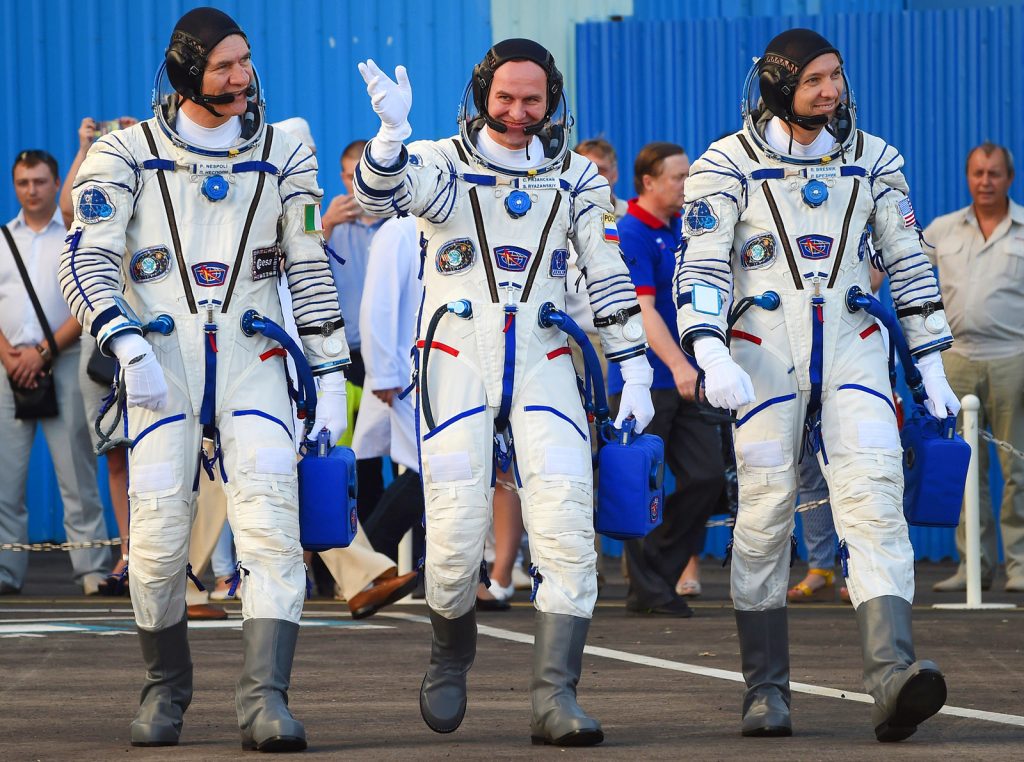Russian cosmonaut Fyodor Yurchikhin has successfully launched the country’s first 3D printed satellite.
During a spacewalk from the International Space Station with fellow Roscomos cosmonaut Sergey Ryazanskiy, the Tomsk-TPU-120 satellite was deployed by hand last week.
A video of the launch shows Yurchikhin tossing the 3D printed satellite into the void where it will spend the next 5 months. The satellite has no engines, and exposed to the gravitational pull of the Earth’s gravity its orbit will decay – eventually burning up in the atmosphere.
World’s first 3D-printed nanosatellite
The CubeSat has a 3D printed hull, and numerous parts and components are 3D printed. The satellite measures approximately 300 x 100 x 100 mm, and also uses an electric battery, which reportedly has made use of 3D printing with zirconium for the first time ever.
Alongside the temperature sensors and other monitoring equipment, the satellite is equipped with a transmitter that will broadcast a recorded message. The greeting was recorded by students of Tomsk Polytechnic University (TPU), where the satellite was designed and made.
The signal is repeated in 10 languages – including English – every minute at the frequency of 145.8 MHz and 437.025 MHz.

Among those monitoring the satellite are the Student Flight Control Center of TPU. TPU Rector Petr Chubik said of the launch, “I have unusual feelings because the world’s first 3D-printed nanosatellite with Tomsk Polytechnic University label went into outer space.”
“The event we waited for a year and a half has just taken place. Everything was done with the assistance of our partners, i.e. ISPMS SB RAS and RSC Energia. This is a truly historic event, on which I congratulate all members of TPU community.”
The Director General of RSC Energia, Vladimir Solntsev, gave his congratulations to the University saying, “Now Tomsk can call itself ‘a space land’.”
“Today we watch the result of joint efforts of industry, university and academician science. This first project is our first step towards future exciting joint projects.”
3D printing space-craft
There are indeed a number of other projects applying 3D printing to satellites. For example, Canada Makes is working with French metal manufacturers FusiA and Canadian communications company MacDonald, Dettwiler and Associates (MDA) to develop a 3D printed satellite bracket.
Also, on June 22 2017 NASA launched ‘KalamSat,’ a 3D printed carbon fiber satellite designed by Indian teenager Rifath Sharook. NASA’s Terrier-Improved Orion rocket took the KalamSat on a suborbital flight as a technology demonstrator.
A project much further along is NASA’s Juno spacecraft, which entered orbit around Jupiter on July 4th 2016. Built by Lockheed Martin, Juno features 3D printed waveguide mounting support brackets made using an Arcam Electron Beam Melting (EBM) 3D printer.

Travelling 1.7 billion miles, this is the furthest a 3D printed part has flown to date. Brian O’Connor, Vice President, Production Operations at Lockheed Martin Space Systems, gave 3D Printing Industry more details in an article for our series, The Future of 3D Printing.
Boeing are also using 3D printing to reduce turnaround time and lower the costs of satellite production.
If you would like to pursue a career in additive manufacturing, take a look at our 3D printing jobs platform. Also our new 3D printing events section in now live.
Subscribe to the 3D Printing Industry newsletter to stay up to date with all the latest 3D printing space news. To be the first with the latest developments follow us on twitter and like us on Facebook.
Featured image shows the Soyuz MS-05 as it launches for ISS in July 2017.


